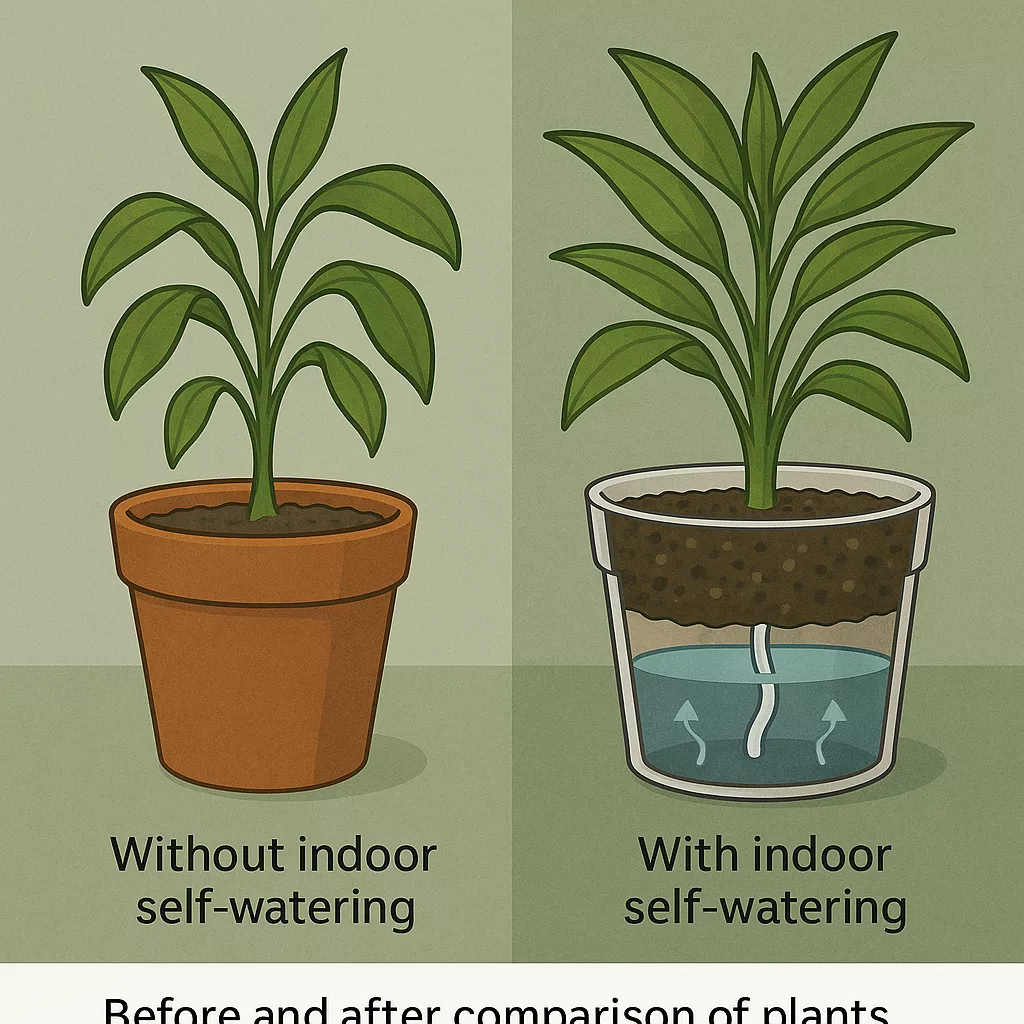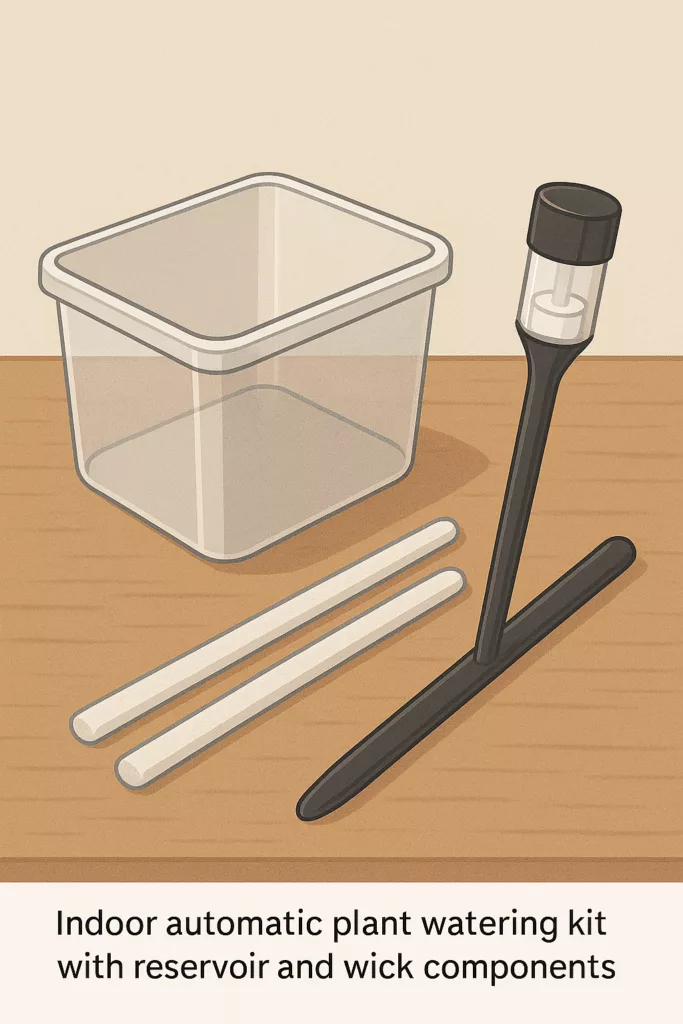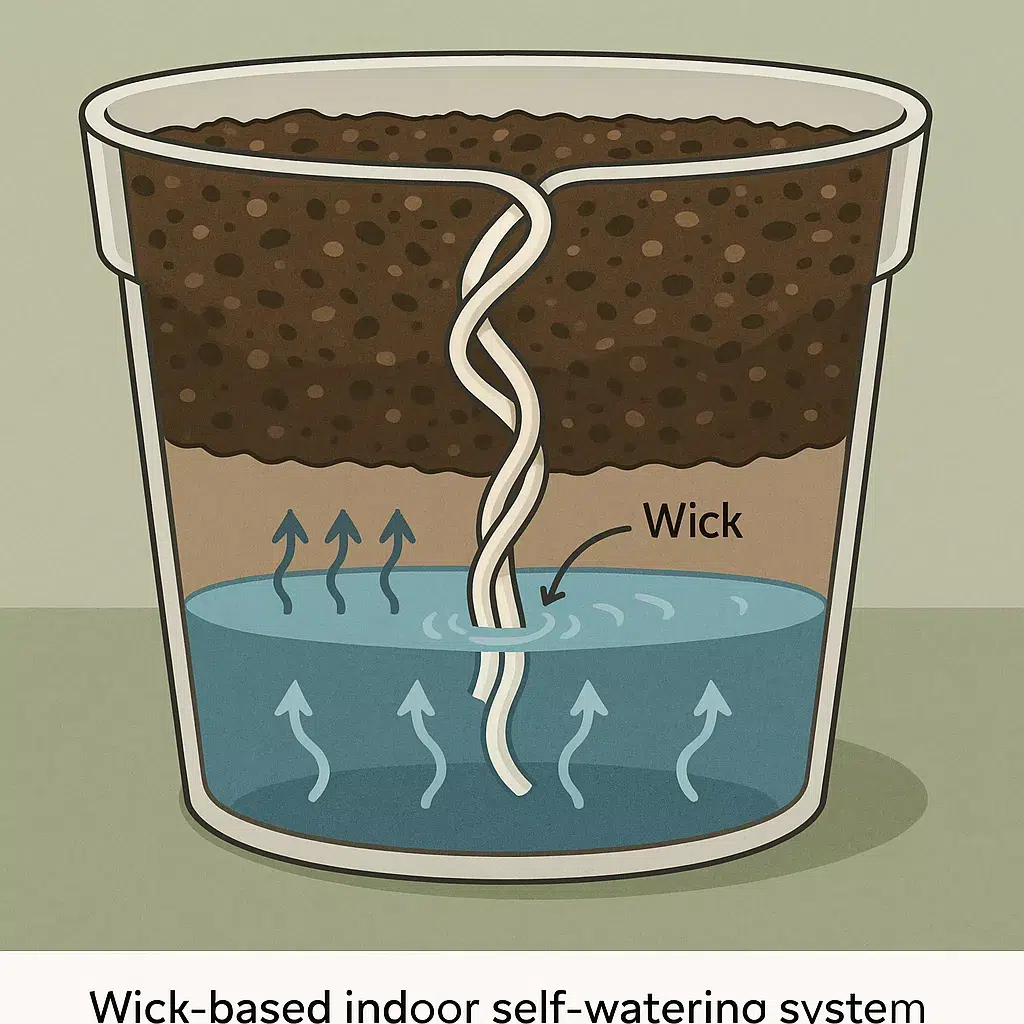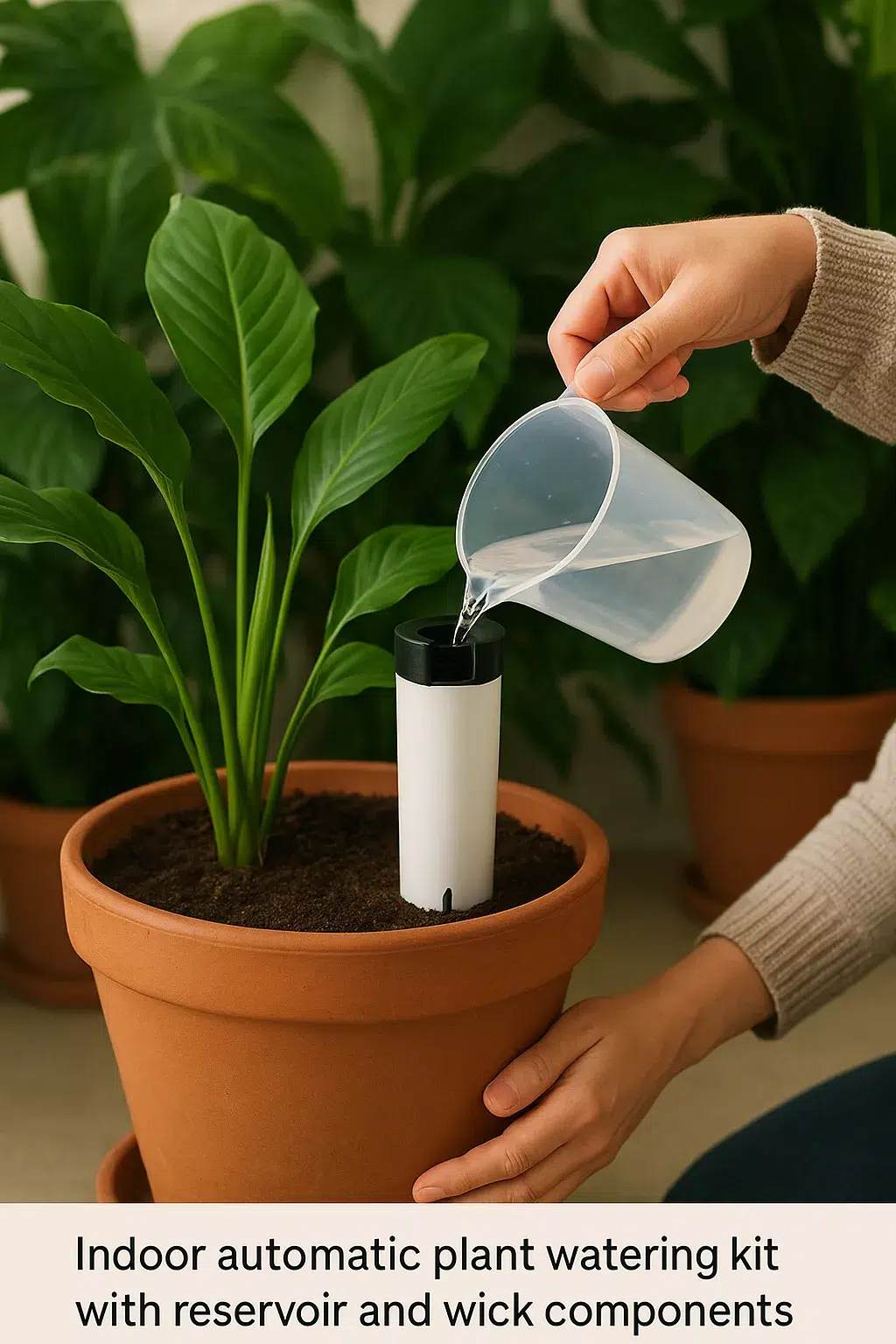Introduction
Indoor self-watering systems are transforming how plant lovers care for their greenery. By delivering the right amount of water automatically, these systems reduce maintenance, prevent overwatering, and keep plants thriving even when you’re busy or traveling. In this guide, we’ll explore their advantages, potential drawbacks, and how to choose the right system for your indoor garden.
Whether you’re a beginner with a few houseplants or an indoor gardening enthusiast, this article will help you make an informed decision.

What Are Indoor Self-Watering Systems and How Do They Work?
Indoor self-watering systems are setups that automatically provide water to plants as they need it, typically using a reservoir and a wicking mechanism.
Common components include:
- Water reservoir: Stores water for days or weeks.
- Wicking system: Transfers moisture to the plant’s roots.
- Overflow protection: Prevents root rot from excess water.
- Indicator: Shows when to refill the reservoir.
They work on the principle of capillary action—the same way a paper towel soaks up liquid—allowing plants to draw water at their own pace.
Benefits of Indoor Self-Watering Systems
Reduced Maintenance for Busy Plant Owners
With automatic plant watering, you can water your plants less frequently. A typical system may keep soil moist for 1–4 weeks, depending on the plant type and environment.
Consistent Hydration
Fluctuating moisture levels stress plants. Self-watering planters deliver consistent hydration, leading to stronger growth and healthier foliage.
Water Conservation
They prevent excess water from draining away, making them eco-friendly and efficient.

Potential Drawbacks You Should Consider
While they are great for convenience, indoor self-watering systems are not perfect.
- Over-reliance: Some plants prefer dry periods; constant moisture can harm them.
- Initial cost: Quality systems can be more expensive than traditional pots.
- Maintenance: Reservoirs still require cleaning to prevent algae buildup.
Choosing the Right Indoor Self-Watering System
When selecting your setup, consider:
- Plant type – Tropical plants like ferns love constant moisture, while succulents do not.
- System size – Larger reservoirs suit travelers or forgetful waterers.
- Material – Plastic is lightweight, ceramic offers better aesthetics.
- Ease of refilling – Look for systems with visible water indicators.

Types of Indoor Self-Watering Systems
Wick-Based Systems
Best for small plants and herbs. A cotton or nylon wick draws water from a container into the soil.

Sub-Irrigation Planters
A separate compartment stores water underneath the soil. Roots grow downward to access moisture.
Automatic Drip Systems
Connected to a pump or bottle, these deliver controlled amounts of water over time.
Self Watering Planter Review – Top Picks for 2025
Here are three highly rated options:
- Lechuza Classico – Stylish, durable, ideal for medium-sized plants.
- Aquaphoric Herb Garden Tub – Great for kitchen herbs.
- Gardener’s Supply Self-Watering Tray – Perfect for multiple small pots.
For a full guide, check our best setups for small indoor gardens.
How to Set Up Your Indoor Self-Watering System
- Choose the right container for your plant size.
- Add a reservoir layer using pebbles, mesh, or a built-in compartment.
- Fill with potting mix suitable for self-watering (light and airy).
- Insert a wick if required.
- Water from the top the first time to help roots adapt.

Common Mistakes to Avoid
- Using heavy garden soil – It clogs the wicking system.
- Neglecting reservoir cleaning – Leads to bacteria or algae.
- Overfilling the reservoir – Can cause root rot.
Expert Tips for Maximizing Efficiency
- Group plants with similar moisture needs.
- Use a moisture meter to track soil health.
- Add liquid fertilizer to the reservoir for slow release.
For beginner-friendly fertilizer options, visit our guide to best indoor plant fertilizers for beginners.
FAQ – Indoor Self-Watering Systems
Can I use them for all plants?
Not for drought-tolerant species like cacti and succulents.
How often should I refill the reservoir?
Every 1–3 weeks, depending on plant and climate.
Are they worth the cost?
Yes—especially for busy individuals or frequent travelers.
Additional Resources
For a deeper dive into sub-irrigation methods, check Gardening Know How’s guide.
Conclusion
Indoor self-watering systems take the guesswork out of plant care, making them a must-have for modern indoor gardeners. By choosing the right model, avoiding common mistakes, and following expert tips, you can keep your plants thriving with minimal effort.
Start today—invest in a self-watering setup and enjoy a lush, low-maintenance indoor oasis all year round.
